Java Moss Care: Tank Placement, Growth and Maintenance
Are you looking for a greenery look for your aquarium? Java moss is one of the popular choices for a freshwater tank. It is well famous for its ability to survive in a variety of conditions and low maintenance requirements. It can provide a nice little hiding place for fish.
However, like any living organism, Java moss does require proper care to remain healthy and continue to bloom in your tank. In this Java moss care guide, we will cover all of the essential information you need to know to properly care for your Java moss, including planting and trimming techniques, water conditions, and common problems to watch out for. By following these tips, you can ensure that your Java moss stays healthy and adds beauty to your tank for years to come.
Table of Contents
Java Moss Stats
| Property | Value |
|---|---|
| Scientific Name | Taxiphyllum barbieri |
| Common Name | Java Moss |
| Family | Hypnaceae |
| Native Region | Southeast Asia |
| Size | 2-3 Inches in height 6-12 in length depending on conditions |
| Color | Vibrant Green |
| Ideal Placement | Foreground/Midground/Carpeting |
| Propagation | Vegetative Reproduction through fragmentation |
| Growth Rate | Slow to Moderate |
| Water Type | Fresh Water |
| Lighting Needs | Low to Moderate |
| Temperature Range | 21-24°C (70-75°F) |
| pH Range | 5.0 to 8.0 |
| CO2 Requirement | Not necessarily required, but it may boost the growth rate. |
| Benefits | Absorbs excess nutrients, helps maintain water quality, provides a natural hiding place for small fish and shrimp |
| Maintenance Needs | Low maintenance, can be trimmed and pruned as needed |
Java Moss
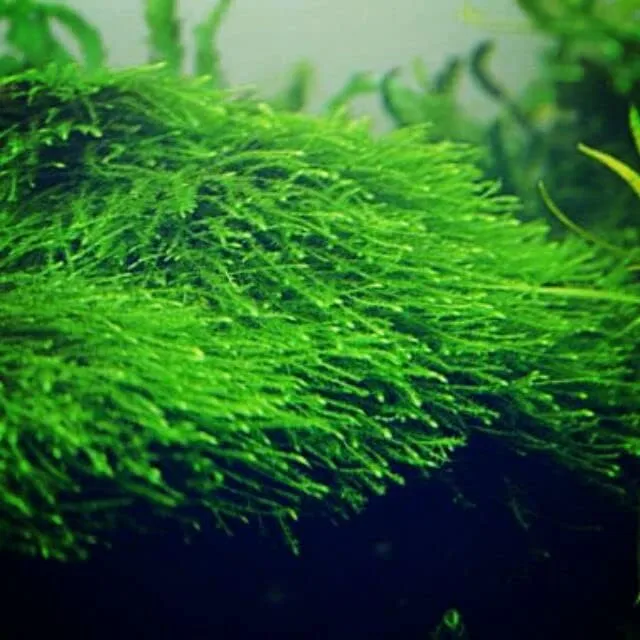
- Rapid Growing
- Best for Carpeting
- Best for Aquascaping
Disclaimer: The images used for products are fetched from Amazon. All rights reserved to Amazon
Origin of Java Moss
Java moss has been used by the natives for centuries. It’s not possible to tell who exactly discovered this moss first. But in 1892, a German botanist, Adolf Engler published the scientific description of java moss in his first edition of Syllabus der Pflanzenfamilien.

Java moss is often confused with other plants including Taiwan moss (Taxiphyllum Alternans), Flame moss (Taxiphyllum sp.) and Christmas moss (Vesicularia Montagnei).
Java moss is native to Southeast Asia, including the islands of Java and Borneo, Singapore, Japan, Malaysia, Vietnam, and the Philippines.
Java moss can grow out of water as well as inside the water. It is often found growing on rocks, tree trunks, and other surfaces in its native habitat. In the wild, Java moss is typically found growing in shaded areas with high humidity, although it can also tolerate some direct sunlight.

Scientific Name of Java Moss
There has been a lot of debate about the scientific name of Java Moss.
Java moss was originally classified as a member of the genus Vesicularia, and it was known by the scientific name Vesicularia Dubyana. This classification was later revised in 1982 and the plant was reclassified as a member of the genus Taxiphyllum by Japanese botanist Z Iwats. Currently, the scientific name of Java moss is Taxiphyllum Barbieri.
The genus name, Taxiphyllum, is derived from the Greek words “taxis,” which means “arrangement,” and “phyllum,” which means “leaf.” The specific epithet, Barbieri, is in honor of Jean Baptiste Barbier, a French botanist who was active in the 19th century.
This aquarium plant belongs to the family Hypnaceae, which is a family of mosses that are found throughout the world.
Appearance of the Java Moss
Java moss is a leafy plant. It grows in an irregular pattern of stems covered with clusters of green leaves on all sides, giving it a pleasant aesthetic look. It has comparatively, smaller leaves as compared to other aquatic plants. Its leaves have long but oval or oblong shapes and a very soft velvety texture.
Talking about the size of the moss, I have noticed that the stems reach a maximum length of 4 inches having a diameter of 2-3mm with optimal light provided. The leaves have approx. 0.7 inches in size.
The most fascinating fact about java moss is it doesn’t have any roots. Rather, it has thin hair-like sticky filaments usually of brown color (sometimes of white color). These are called rhizoids.
These rhizoids, acting like their feet, help moss to anchor itself with the surface securely. Rhizoids do not help moss to provide nutrients. On the contrary, java moss absorbs nutrients and minerals from its leaves and stems.
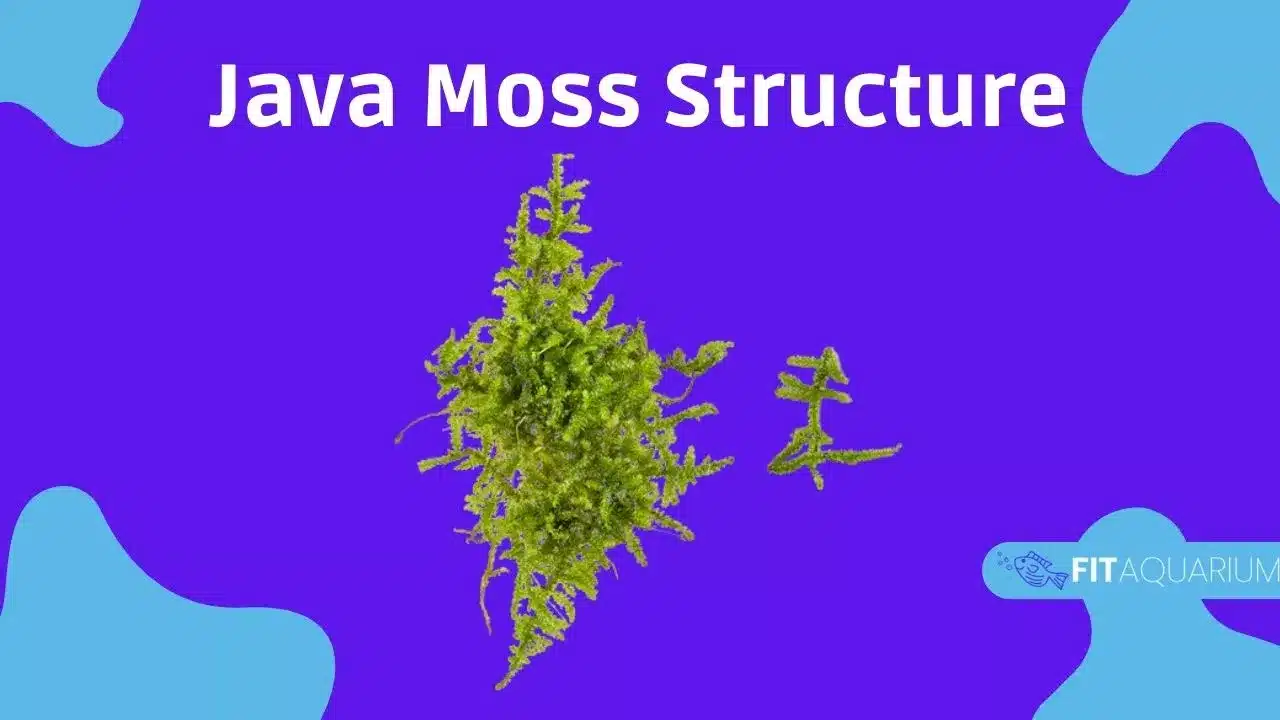
Depending upon the amount of light, it daily absorbs, java moss has a wide range of colors from light, pale green to dark, forest green. Moreover, its color also depends upon the fact that whether it has grown underwater or on land. The moss growing in water has greener but smaller leaves than the ones grown on the land. After some time of plantation, its color turns into a darker greenish color hinting that moss is reaching a more mature stage of growth.
Appealing aesthetic looks and easy attachment to any surface (coz of its rhizoids) make it a great addition to any aquatic or terrarium setup.
Benefits of having Java Mosses
Being one of the most popular aquarium plants, it not only provides your aquarium with a naturally beautiful appearance but also has multitudes of benefits.
- Java moss plants are an excellent choice for beginners as it is easy to grow and maintain.
- It’s very easy to stick java moss to any surface like rock or driftwood.
- You don’t need to worry about the oxygen in the tank. As with the process of photosynthesis, java moss will boost the oxygen level in your tank.
- If you take care of java moss properly, it will prove to be an algae controller.
- It will provide cover and hiding places for fish and other aquatic species.
- Java moss leaves, due to their soft velvety texture are very safe for fish to lay eggs on.
- Java moss keeps the nitrate and phosphate levels of your aquarium water low.
- Where similarly shaped Greater water moss (Fontinalis Antipyretica) is famous for cool water aquariums, Java Moss is considered to be the most often used aquatic plant for tropical aquaria.
After considering these java moss benefits, one should definitely go for this aquarium plant.
Compatible Tank Mates
Java moss has proven to me as one of the hardier plants in my fishkeeping hobby. It not only survives with a large number of creatures but is also beneficial for them. Some of the most compatible tank mates for Java Moss are:
Fish:
As I mentioned earlier, java moss provides a cover for fish where they can lay their eggs. It also acts as a natural filter for the aquarium. Some popular fish species that are compatible with java moss are Neon tetras, Guppies, Molly, Platy, Rasboras, and Catfish.
Shrimp:
Java moss also proves itself to be the savior of shrimps as it provides them with safe and secure hiding spots. Ghost shrimp, Cherry shrimp, Blue velvet shrimp, Blue tiger shrimp, and Amano shrimp are some great choices for java moss.
Misconception: Some people thought Amano shrimp eats java moss but it’s not true, it only picks algae from moss leaves and does not damage the moss itself.
Snails:
Snails could also be a great option for java moss. They maintain the growth of the moss. They are also algae eaters so help to keep your moss healthy. Some of the most popular options of snails for java moss are Nerite snails, Mystery snails, Ramshorn snails, Japanese trapdoor snails, and Malaysian trumpet snails.
Other Aquatic Plants:
Java Moss is also compatible with other plants. These plants not only give a natural look to your aquarium but also help to keep the conditions of the water stable. Anubias, Java Fern, Marimo Moss Balls, Hornwort, and Water Wisteria are thought to be great pairs with Java moss as they also need low light and similar environmental conditions.
Read Also: Java Moss Ball vs Marimo: A Comprehensive Comparison
Other Aquatic Creatures:
Besides all the above-mentioned companions for java moss, you can also think about other aquatic creatures to pair with java moss. These include African Dwarf Frogs, Horned Nerite Frogs, Firebelly Newt, Spotted Newt, Axolotl, and Red Clawed Crab.
Some Harmful Tanks Mates
Even though java moss can survive with several varieties of species, some species can prove to be harmful to your moss.
Large Fish:
Large fish can be harmful to your moss as they can uproot it. These fish can also disturb the balance of your aquarium which will increase the difficulty for your moss to thrive. These include Cichlids, Goldfish, Angelfish, and Clown loach.
Overpopulated Snails:
Snails are beneficial for your java moss but their overpopulation can cause overfeeding and pollute the water. So, to keep your java moss evergreen you have to limit your snails.
Aggressive Species:
Some aggressive fish species like Piranhas are considered to be the worst idea for pairing with java moss or a peaceful community tank. Their fast movement can severely damage the moss.
Other Aquatic Plants:
Some Plants such as Egeria Densa and Elodea may also have side effects on your aquarium moss as they can outcompete for light and nutrients
Aquarium Conditions and Requirements to Grow Java Moss
Maintaining the proper aquarium conditions and requirements is crucial for Java moss’s health and growth. The amount of light daily consumed, temperature requirements, the pH level, filtration, and the substrate are important factors to consider when growing java moss. A lack of adequate conditions may lead to java moss dying.
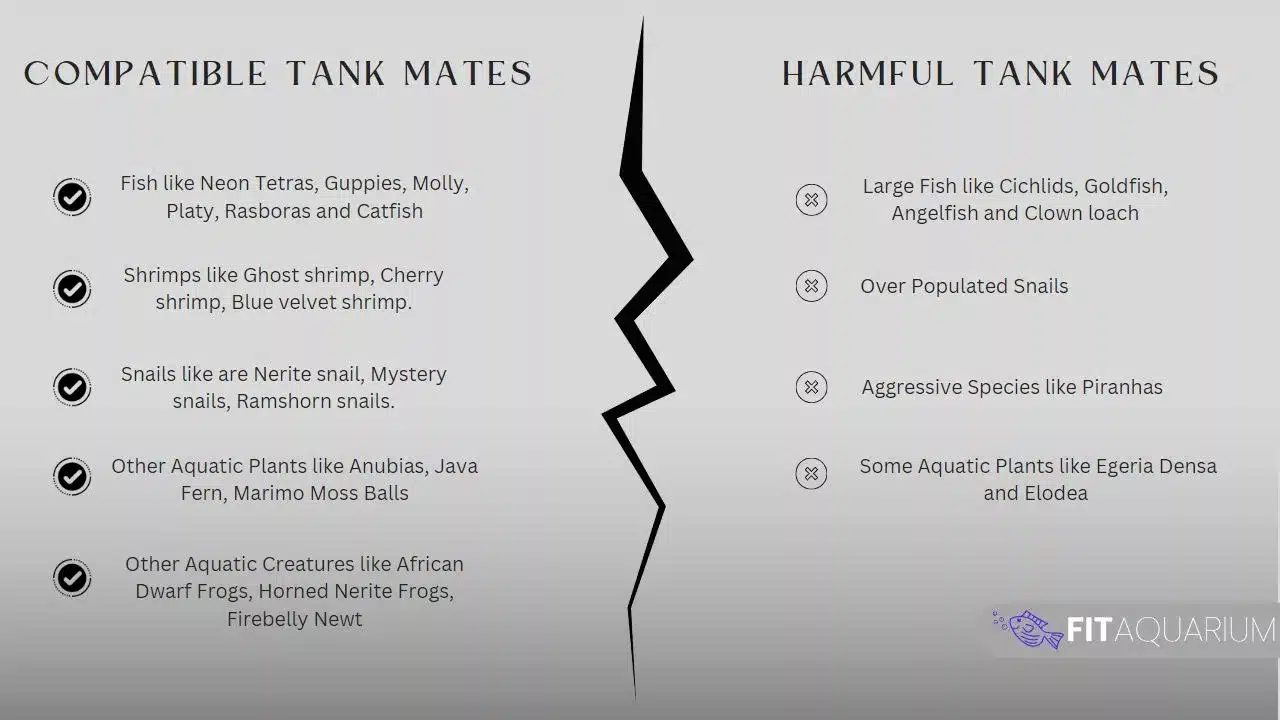
Tank Size:
Java Moss adds beauty to any size of the tank from small to large. I would suggest you go for a minimum of 5 gallons (20 liters) to grow java moss.
In a small tank, you should consider providing adequate light and a consistent flow of water. It can be attached to any surface like rocks, driftwood, or even glass of the tank.
While growing in large fish tanks or pools, let your java moss spread everywhere to give a natural look to your aquarium.
Water Parameters:
Despite being tolerant of a wide range of environmental parameters, Java moss prefers certain conditions to flourish. I recommend the following water conditions for Java moss.
Water Temperature:
Java Moss will grow in water temperatures ranging from 70°F to 75°F(21°C to 24°C). One should check the water temperature on a regular basis. Monitoring the water temperature and making adjustments as needed is important to ensure that it remains within this range.
Keep the temperature of your tank consistent. Rapid temperature changes may prove to be harmful to your moss and other creatures of the aquarium.
pH Level:
Java mosses can survive in water having a pH level of 5 to 8. However, the ideal pH for java moss to bloom is considered to be between 6 – 7.5. To keep your moss healthy, it is advised to regularly check the pH level.
Just like temperature, one should avoid sudden changes in pH level.
Water Hardness:
It is possible to grow Java moss in a wide variety of water hardness conditions, but it would perform best in water having a general hardness of 25°dGH (degrees of general hardness) or carbonated hardness of 20°dKH (degrees of carbonate hardness).
You can alter the hardness of tank water by adding limestone (to increase hardness) or sodium chloride (to decrease hardness) supplements.
Water Flow
Java Moss will grow well in moderate water flow. High-speed water flow may pull out your moss from the surface it was attached.
Moreover, a moderate flow of water carries a good amount of oxygen that is also beneficial for the growth of java moss.
It’s vital to remember that water parameters might alter over time owing to a variety of factors such as feeding the fish, introducing new occupants, or evaporation. It is critical to check and change the water parameters regularly to ensure that they remain within the optimum range for Java moss growth.
To constantly monitor above mentioned water requirements you should use a water test kit.
Light Requirements:
Adequate lighting setup is crucial to propagate java moss. Proper lighting is necessary for the process of Photosynthesis, moss growth, its color and appearance, and general health.
According to my observations, 8 to 10 hours of moderate light is optimum for Taxiphyllum Barbieri. Fluorescent and LED lights are great options for this purpose.
You should also remember that the intensity and duration of light can also affect the growth, health, and color of aquarium moss. Sudden changes in light intensity will be harmful to aquarium fish as well as plants.
Your aquarium light requirements also depend on other various factors such as tank size and other occupants of the tank.
Filtration:
Combinations of mechanical filtration, biological filtration, and chemical filtration will do best to keep healthy java moss while maintaining water quality.
A mechanical filter will purify water from solid waste and debris, the biological filter will keep the balance of beneficial bacteria in your tank and the chemical filter will help to remove impurities.
It should be remembered that your filter does not disturb the moss with high flow. You must have to clean your filters regularly for their best performance.
Substrate
Java moss plant does not require a specific kind of aquarium substrate. Java moss attaches itself to literally any surface even with the glass of the aquarium.
Some popular options for the substrate are Aquarium Gravel, Aquatic Soil, Sand, Driftwood, and Rock.
Fertilizers
Taxiphyllum Barbieri can grow without any extra aid of fertilizers. It can absorb surplus nutrients and wastes from the tank itself.
However, if your tank has low nutrients as per requirement, then you can introduce root tabs or liquid fertilizer having iron and other micronutrients in modest amounts to help the java moss grow faster. But you have to monitor your tank constantly to ensure that it does not induce algae overgrowth
Does Java moss need CO2
CO2 levels do not matter to Java moss. A low quantity of CO2 can grow java moss. Rather high levels of carbon dioxide can boost algae growth.
However, if the aquarium is heavily planted, It may be necessary to use CO2 injection systems to supply needed carbon dioxide, for the photosynthesis of plants.
But you have to monitor the tank as supplements of CO2 can alter the water parameters (like pH and Temperature) and also increase algae.
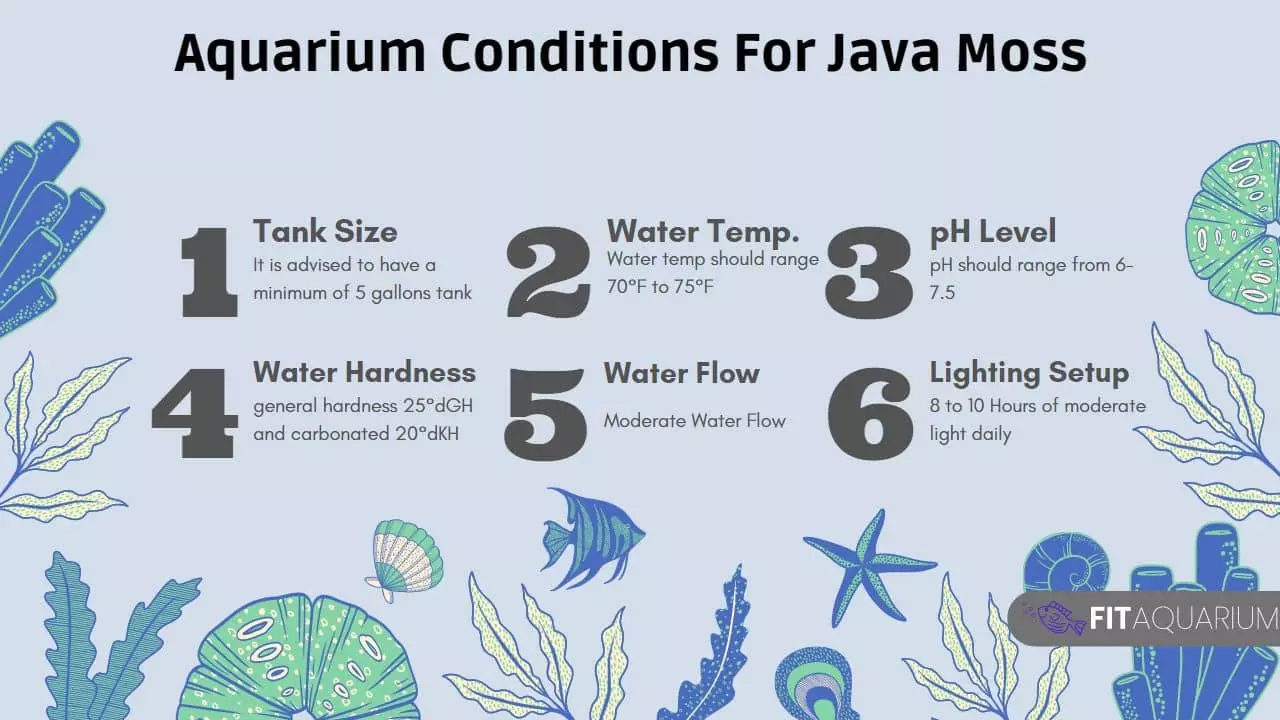
Tank Placement or Aquascaping
Aquascapes can be enhanced with Java moss, which adds a unique and natural aesthetic to the space. It is a lovely and adaptable plant that will surely enhance your aquarium’s distinctive and natural look.
It can create a naturally appearing carpet, green moss walls, intricate tree designs, and realistic caverns (to provide hiding spots) with its lovely rich green hue leaves and delicate velvety texture.
I’m gonna explain the popular placements for java moss that I have seen in my experience.
Java Moss Wall
This is one of the beautiful ways to use java moss plants to add visual variety and natural beauty to an aquarium.
Here is a step-by-step guide to growing java moss wall
- Items Required: Java Moss, background or mesh panel, fishing line, or aquarium glue.
NOTE: Make sure your all items are non-toxic. - Clean your background to remove any kind of dust or debris
- Attach a small amount of java moss to the background with the help of glue. You can also use the thread by placing the moss on the background and then wrapping the thread through it.
- Repeat this process until the whole background is covered up with moss.
- Place the java moss wall in the tank.
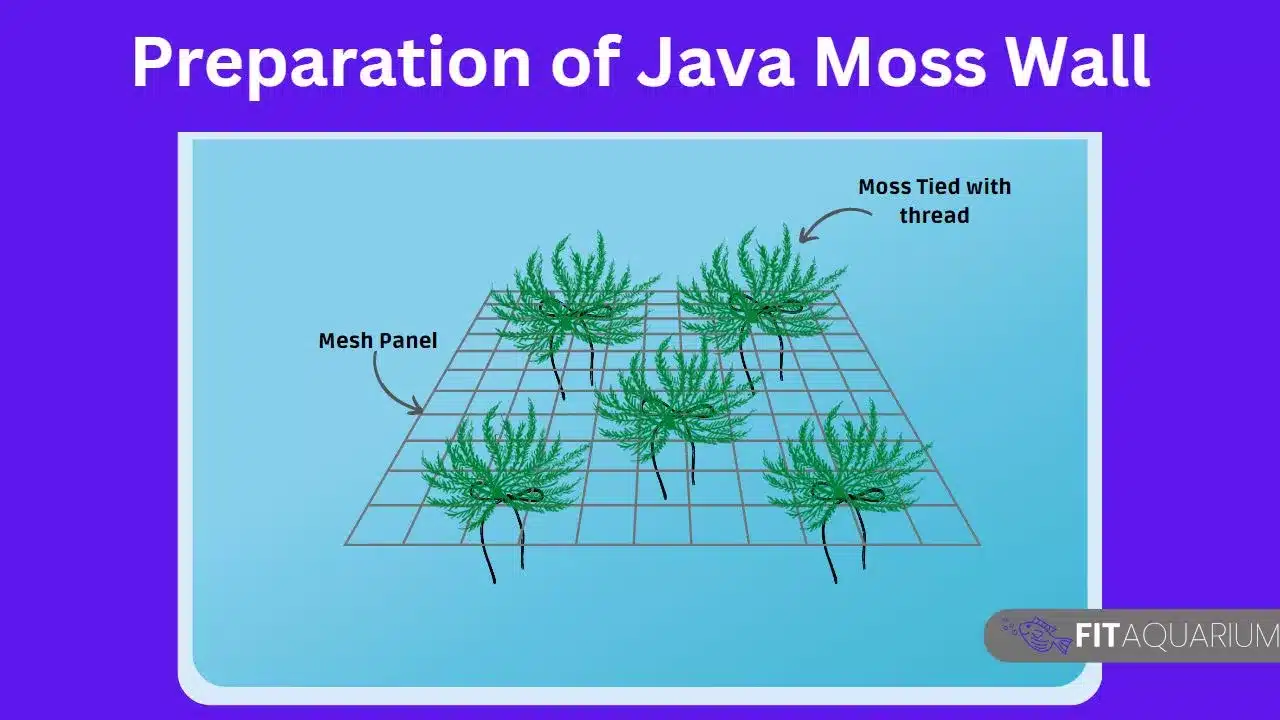
Once the moss is attached, it will grow and cover the whole backdrop forming a natural-looking tank wall.
Various uses can be made from this wall from creating a focal point in the tank to separating different portions of the aquarium.
When it comes to maintaining a moss wall, you should provide it with enough light, maintain moderate water flow, and clean the tank to minimize dirt buildup.
Java Moss Carpet
Many aquarists love to have java moss carpets in their fish tanks. The aquarium gets an aesthetically pleasing surface through these short plants and beautiful lush green leaves. This will help to provide a comfortable environment for your aquarium fish.
Here are steps to follow to plant java moss carpet:
- Items required: Java Moss, two layers of mesh, fishing line, thread or non-toxic glue, and scissors.
- Clean both pieces of mesh to remove any kind of dust or debris
- Measure the carpet area of your aquarium and cut both pieces of mesh accordingly.
- Lay down one of the pieces of mesh.
- Place small pieces of java moss on it
- Put the other piece of mesh over the moss so that java moss gets sandwiched between these pieces.
- Use thread, or glue to hold both layers of mesh together.
- Place the java moss sandwich in the tank.
Note: If you use plastic material mesh, then you have to weigh down your mesh by using rock or glue.
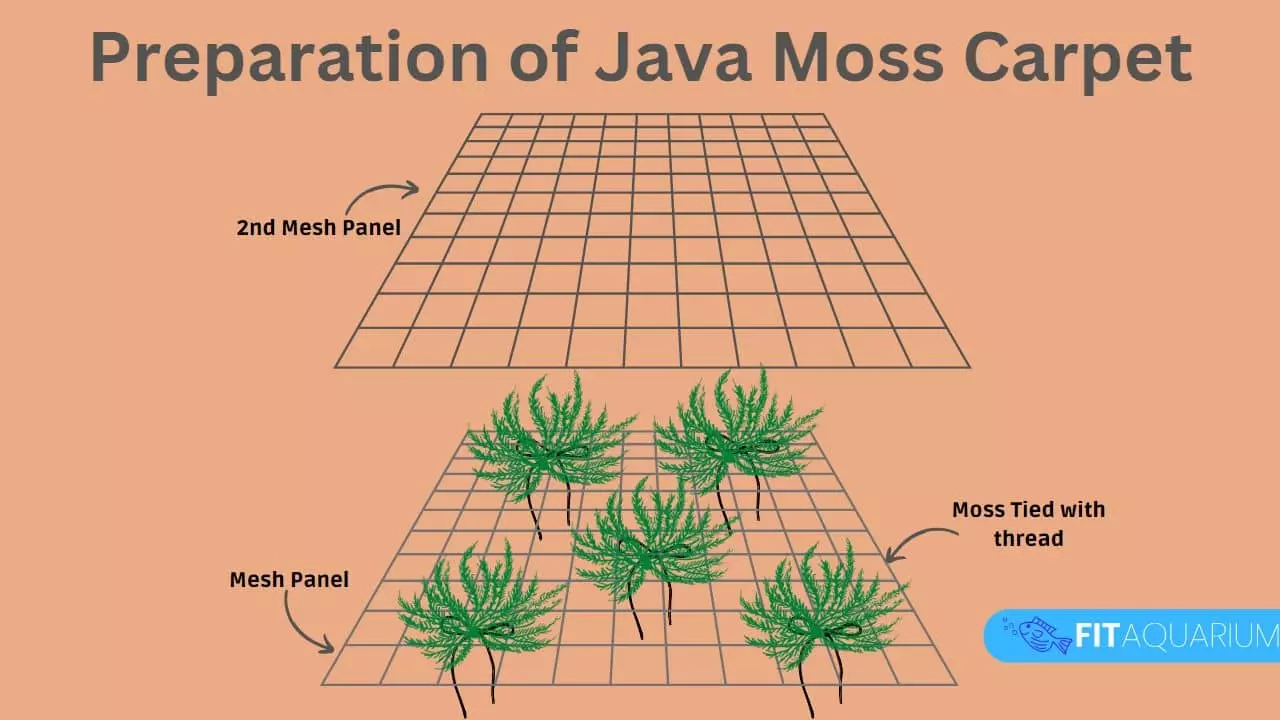
There is also another method some people use to develop their aquarium carpet. They just simply place some pieces of java moss to entirely cover their already present substrate in the tank and then sprinkle gravel on the fresh moss layer. After some time, moss starts to grow.
You can also create a Java Moss carpet on Sand. It is slightly difficult as compared to growing it on gravel. But if you have the sand bottom tank and want to carpet it with Java Moss then our detailed article on this process will help you a lot.
In my observation, java moss grows at a little slower rate and thus it might take months to cover the whole bottom of the tank. But eventually, you will find a lush green soft carpet for your aquarium.
Java Moss Tree
Decorating my aquariums with java moss trees is my personal favorite method. It adds a distinct and aesthetically natural appearance to an aquarium. It contributes to the creation of a peaceful environment. It adds depth and dimension to the scene.
Java moss plants can be developed by attaching java moss to driftwood. It could be only one vertical piece of tree or it could be a number of pieces joined with each other (through aquarium-safe glue) to form the natural shape of tree trunks with branches.
You can also use artificial plastic-made tree shapes. The shape of the java moss plant is just limited to your creativity.
Here are steps to grow a java moss tree from driftwood.
- Items Required: small pieces of Java moss (sized 2-4 inches), driftwood tree, fishing line, or aquarium-safe glue.
- Make sure your driftwood tree (plastic-made tree shape) is thoroughly cleaned.
- Attach one by one a small piece of java moss to a tree trunk by wrapping the fishing line. Alternatively, you can use glue to attach these moss pieces.
- Place the tree in the tank. If it starts to float you have to weigh it down. You can also stick the bottom of the tree to the tank surface using glue.
- It is important to place your tree where there is enough light for the moss to bloom.

The surface of driftwood or plastic may be visible at first due to the thin layer of moss, but the moss will eventually cover the entire surface. As a consequence, a natural-looking tree will be growing within an aquarium.
Java Moss Caves
As an aquascaping expert, I can attest that building a Java Moss Cave out of rocks is a simple and super easy process. This strategy not only provides a natural hiding place for fish and other aquarium inhabitants but also adds an aesthetic element.
You can create a cave from rocks by simply sticking different rocks with each through glue. Keep in mind that you use aquarium-safe glue.
Here is a step-by-step process to plant Java moss cave
- Materials required: You need java moss, a rock cave or cave-shaped plastic structure, and non-toxic glue.
- Clean your cave thoroughly.
- Attach a small piece(2-4 inches in size) of java to your aquarium with glue and repeat this process until your whole cave is covered with moss.
- Place your cave in the aquarium where enough light is available
Java Moss Floating Islands (Most Creative Decoration)
Some aquarists create floating islands covered with java moss. In my aquascaping expertise, this is one of the most inventive decorations I’ve ever seen. It will take the attractiveness of your aquarium to the next level.
These islands are made of Styrofoam or other buoyant materials. So it’s super easy to shape the islands out of raw Styrofoam using scissors.
Here are simple steps to create floating moss islands for your aquarium.
- Items Required: Java Moss, Styrofoam, Scissors, Fishing line or thread, Non-Toxic glue
- Cut your java moss clump into small pieces of 2-4 inches.
- Clean your Styrofoam thoroughly to remove any dust.
- Using scissors, shape your Styrofoam into an island. To create a realistic island shape, cut Styrofoam into different sections and glue them together.
- Attach small pieces of your moss to Styrofoam Island with glue. Cover all sides of the island.
- Tie a short length of thread or fishing line to the island’s supposed bottom side. Connect the other end of the thread to a small rock or any other weight.
- Place the Styrofoam island in the tank gently. It attempts to float above the water level, but because of the weight tied to its bottom, it becomes stuck in the middle of the tank.
Maintain your island by regularly trimming unnecessary tips of moss.
Its aesthetics make the aquarium appear to be from another planet. There may be a sense of movement and fluidity in the aquarium because of the floating island.

You can also attach Java Moss to foam balls to design eye-catching Java Moss Balls. It looks similar to Marimo.
How to Plant Java Moss in Aquarium
It is recommended that recently purchased mosses should be cleaned before adding them to the aquarium as these may have pests or nuisance algae attached to their leaves.
To do so, first you have to fill a bucket with water of the same pH and temperature as your aquarium has. Now dip the moss in the water. Clean the moss gently with your hands or a brush (usually a baby toothbrush). Rinse the moss well under running water to eliminate any leftover dirt. After gently squeezing the moss, spread it out on a paper towel to dry. When the moss has dried completely, it could be planted in the tank by one of the undermentioned methods.
Floating Method
The floating plant method is one of the simplest methods to add moss to your aquarium. Many aquarists, however, dislike it.
You may float your moss in the tank in two ways. The first method is to simply cut little bits of moss and adhere them to Styrofoam. Place these moss-covered pieces in the tank to float. However, there is a high possibility that moss will be pulled into the filter, clogging it.
NOTE: To deal with this issue, you can use a filter guard or a net.
The other path provides some filter safety. Simply tie your moss pieces together with a fishing line or thread. Now, attach the other end of the line to a rock or other weight item in the tank. It will keep your moss floating while preventing it from being fetched in the filters.
Tying with Fishing Line
One of the most popular ways to plant moss is to tie it to the décor with a fishing line or cotton thread. Simply lay your moss over the driftwood, rock, mesh panel, or any décor to which you wish to add java moss and tie it with a fishing line or cotton thread. Cotton thread will fall off over time, but by that time your moss would probably anchor itself with the surface.
Glue Sticking Method
This is also a well-known method used by many aquarium owners to attach java moss solid surfaces like driftwood.
You have to use aquarium-safe silicon to adhere java moss to the surface. Simply dap a few drops of adhesive on the surface and gently press the moss over there. Try to avoid touching the adhesives with your fingers. You should wear gloves. After you feel the moss is secure you can place the décor in the tank.
NOTE: Aquarium safe silicone is a preferred adhesive as it works perfectly in water and is also safe for aquarium fish or other creatures.
How to propagate Java Moss:
Java moss propagation is really simple. Simply remove little pieces of java from the parent moss where it is the densest and healthiest. Clean these moss fragments and place them in the new tank where you want the child moss to grow. Over time, it will begin to adhere to the surface and the result will be more java moss for you.
Java Moss Care and Maintenance:
Although java moss is one of the hardiest aquarium plants, it should be remembered, that necessary java moss care and maintenance will assist to keep it looking its best and ensure that it continues to flourish in your tank.
Here are some of the maintenance requirements you may face if you are adding java moss to your fish tank.
Trimming and Cutting
Regular java moss trimming and cutting are vital for its development and general health. It prevents the overgrowth of moss and promotes new growth. It enhances the overall beauty of your tank.
Trimming java moss will not only maintain it in shape but will also assist it in not competing for oxygen and nutrients with other aquarium plants or occupants.
If your moss leaves are getting brown from the middle, it means your moss has got enough dense that it is difficult for light and water flow to reach there. It would be compulsory to trim the moss to keep your java moss alive.
You can use the simple scissors you have for your planted aquarium for the trimming and cutting of java moss. In routine, it should be done on a weekly or bi-weekly basis.
NOTE: You should clean the tank of the clipped java moss. It might block your aquarium filter or make the water muddy by remaining in the tank.
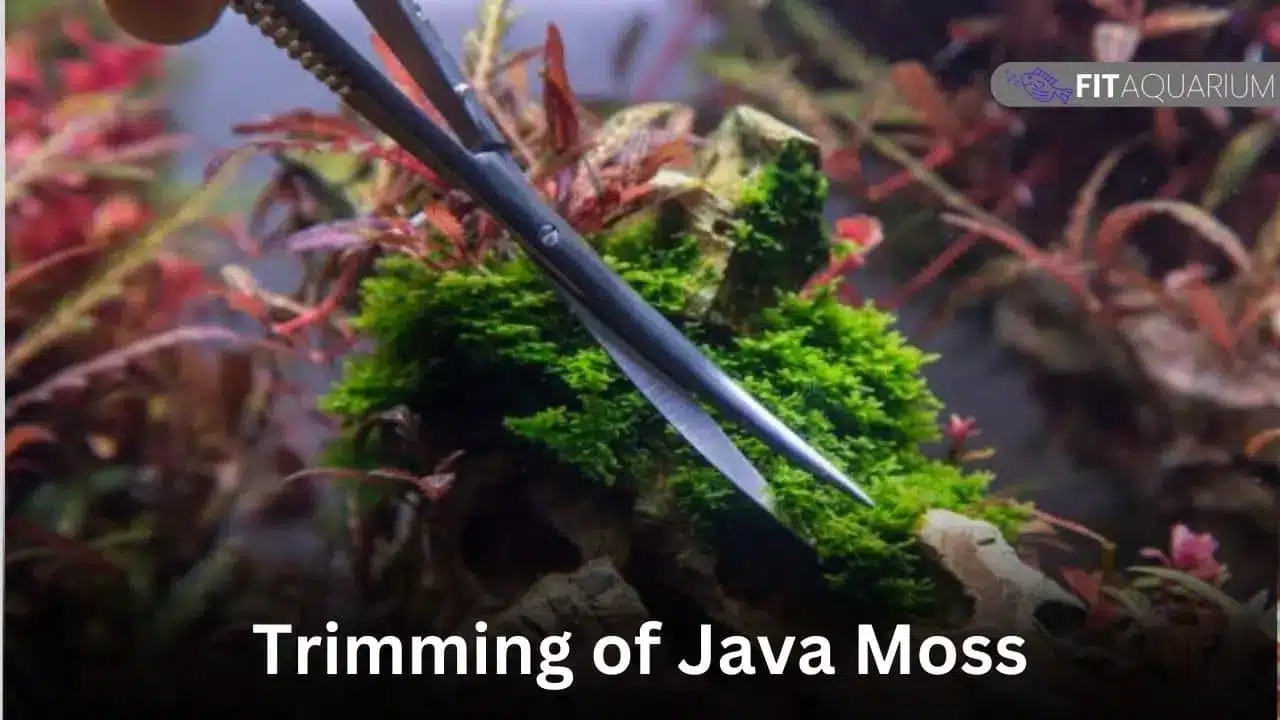
Cleaning
Java moss can easily be a good target for detritus and debris. Cleaning up detritus is required and should be done regularly.
NOTE: Detritus is a combination of organic waste that is formed from uneaten food, fish waste, and dead plant materials. It accumulates at the bottom of the tank
If your moss is attached to a solid surface like driftwood or rock, you should simply take your moss out of the tank and clean it there. Gently rinse the moss in the running tap water. You can also baby toothbrush to thoroughly clean the leaves of the moss.
If it is hard to take your moss out of your tank, you have to clean your moss in the tank. You can use a small siphon to remove any kind of debris and detritus from the tank.
NOTE: You have to turn off the filter before cleaning and then have to restart it after the completion of the cleaning.
Java Moss Diseases
Although java moss is a tough plant with several benefits, there may be some issues you may encounter. These are detailed below, along with a concise solution to overcome those problems.
Algae Growth
Java moss frequently encounters algae. Algae grow in aquariums with intense lighting setups or lengthy periods of light. Phosphate and nitrate levels that are too high may also promote algae development.
Java Moss grows at a slower rate than algae, allowing algae to entirely cover the moss. Physically removing algae would be quite difficult.
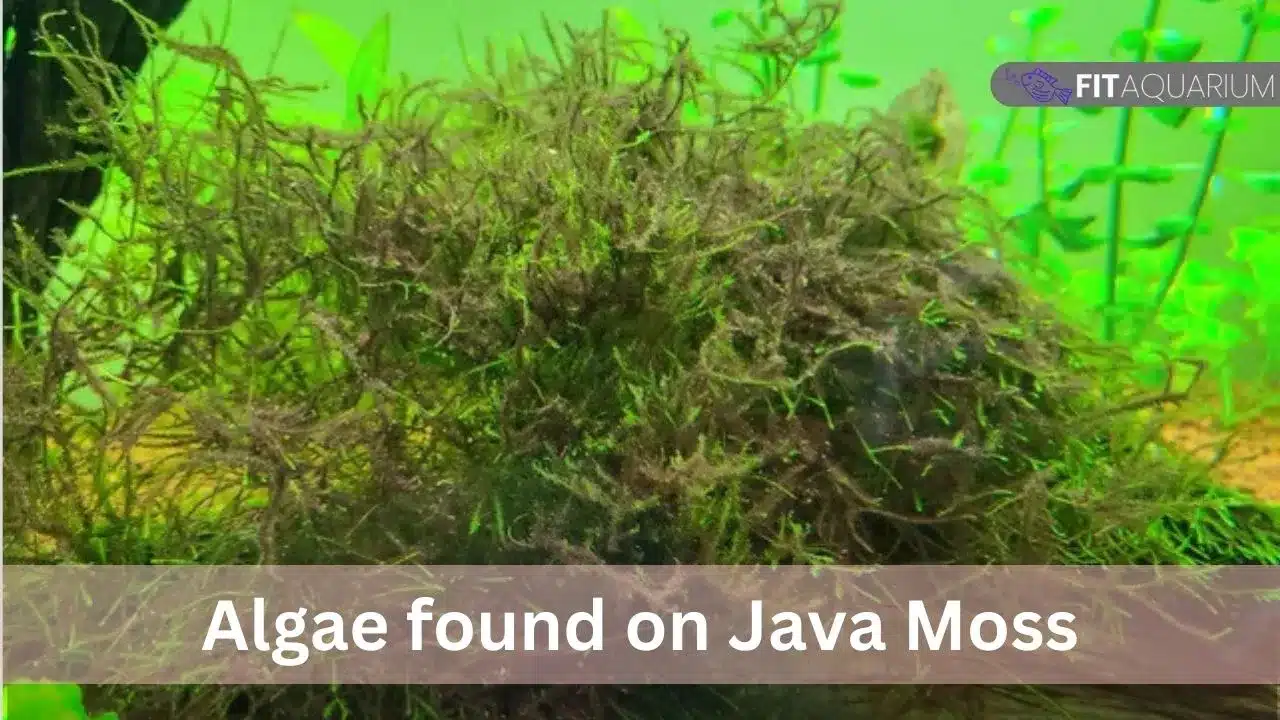
You should lower your lighting hours for moss and reduce fertilizer to prevent algae growth. Increasing Carbon dioxide levels might help in this direction.
You can also add anti-algae species. Cherry shrimp or Amano shrimp would be the ideal choice for this purpose.
Hydrogen Peroxide is another option. It would be safe for java moss to grow but not for algae. First, you have to empty your fish tank by a third or half. Sprinkle the hydrogen peroxide over the remaining water and let it soak. After some time, you can fill the tank.
Physically you can remove java moss using a toothbrush but it would be very hard to accomplish the task.
Java Moss Dying Off
If your moss is not getting enough light, suitable water conditions, or necessary nutrients, its leaves will develop a brownish-yellow tint. This is an obvious indication that your moss is dying off.
Read Also: Why Java Moss Turning Brown? {5 Proven Tips To Revive It Quickly}
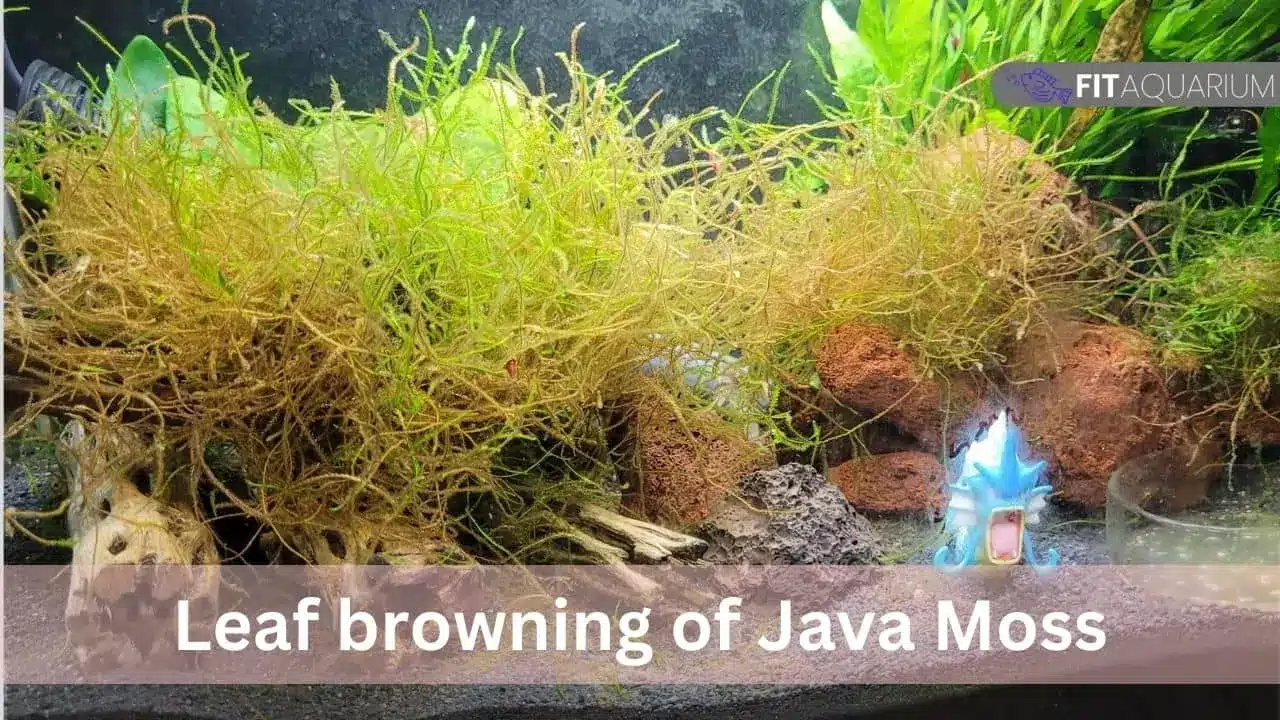
To tackle this problem, keep an eye on the light supply, use fertilizer additives like root tabs, and filter maintenance.
Comparison with Other Aquarium Plants
with Flame Moss
In its comparison with flame moss, it is one of the most difficult questions to answer which one is the winner. Both have their benefits as well as some drawbacks comparatively.
When flame moss has a slow growth pace, then it also needs less trimming and pruning in contrast. Java moss has a leafy structure while flame moss has flame shaped structure growing in only a vertical direction. Both aquarium mosses have almost identical environmental needs.
Read Also: Christmas Moss Vs Java Moss [Choosing The Best One]
Where to Buy Java Moss?
Java moss is available from a variety of sources. You can purchase Java Moss from the vendor I trust by following the card below. I’ve personally bought from them multiple times for my tanks, and their mosses consistently boast lush greenery and superior quality.
Java Moss

- Rapid Growing
- Best for Carpeting
- Best for Aquascaping
How to identify Java Moss?
Before buying java moss you should be able to distinguish it from other similar-looking aquarium plants.
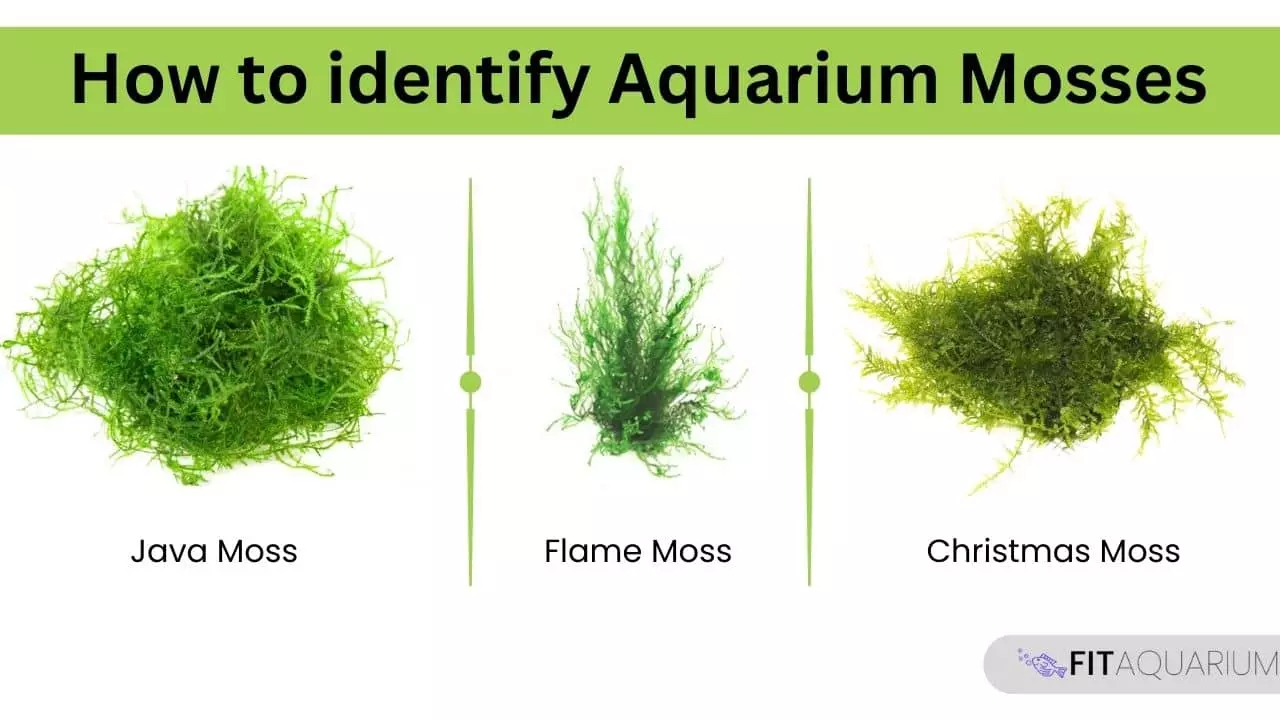
Java moss is undoubtedly the moss with thin leaves in an irregular pattern. The moss with flame-shaped vertical leaves is Flame Moss Taxiphyllum sp. While comparing it with Weeping Moss (Vesicularia Ferriei), weeping moss has shoots that dangle down like flowing tears.
Infographic on Java Moss
Here is an infographic on Java Moss Care that will help you to have all the caring stats about Java Moss in a single image.
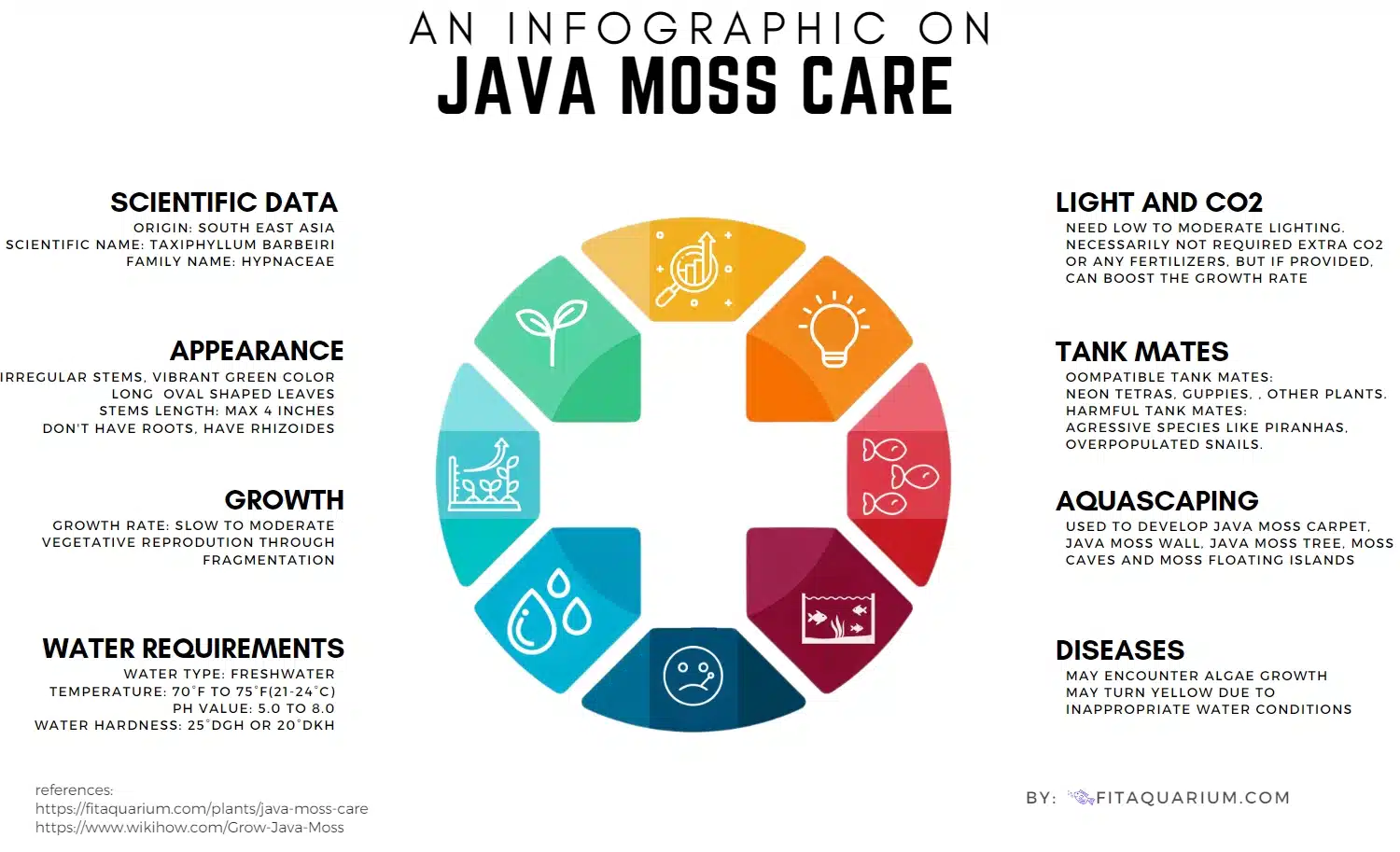
Conclusion
In conclusion, Java moss is a tough plant that can survive in a variety of conditions. It can be attached to any surface including driftwood, rocks, or even the glass of the aquarium. With very general aquarium requirements, it can beautify your aquarium with moss carpet, background wall, or magnificent floating islands You may simply manage your aquarium moss by paying minimal attention to trimming and cutting.
here is also a video on Java Moss by our Youtube Channel.
In my opinion, java moss is an excellent choice for giving your aquarium a natural and appealing appearance.
Disclaimer: As an Amazon Associate, we earn from qualifying purchases (with no extra costs to you)
Frequently Asked Questions
Here are some frequently asked questions about Java Moss Care.
What is Java Moss good for?
Java Moss is a versatile aquarium plant, being a valuable addition to freshwater aquariums. It offers both aesthetic appeal and practical benefits for the health of your tank’s inhabitants.
1. What is Java moss?
Java moss is an aquarium moss scientifically named “Taxiphyllum Barbieri” popular for its low maintenance and easy care. It can bloom in a variety of water parameters. It has proved itself a great choice for aquacapers by forming carpets, moss walls, moss-covered trees, caves, and eye-catching moss floating islands.
2. How do I care for Java Moss?
Java Moss is comparatively easy to care for and grow. It requires low to moderate lighting. It can survive in a range of water conditions. Simply attach it to rock, driftwood, or any surface in your aquarium and it will start growing. The only thing you need to pay attention to is trimming and cutting on a regular schedule.
Can you let Java Moss float?
Yes, you can. In fact, it’s a great idea to give a beautiful shed to your aquarium. To do so you have to tie your java moss patch with the fishing line and glue the other end of the line to the bottom of the tank. But be careful if your moss is blocking the required sunlight for other plants in the tank.


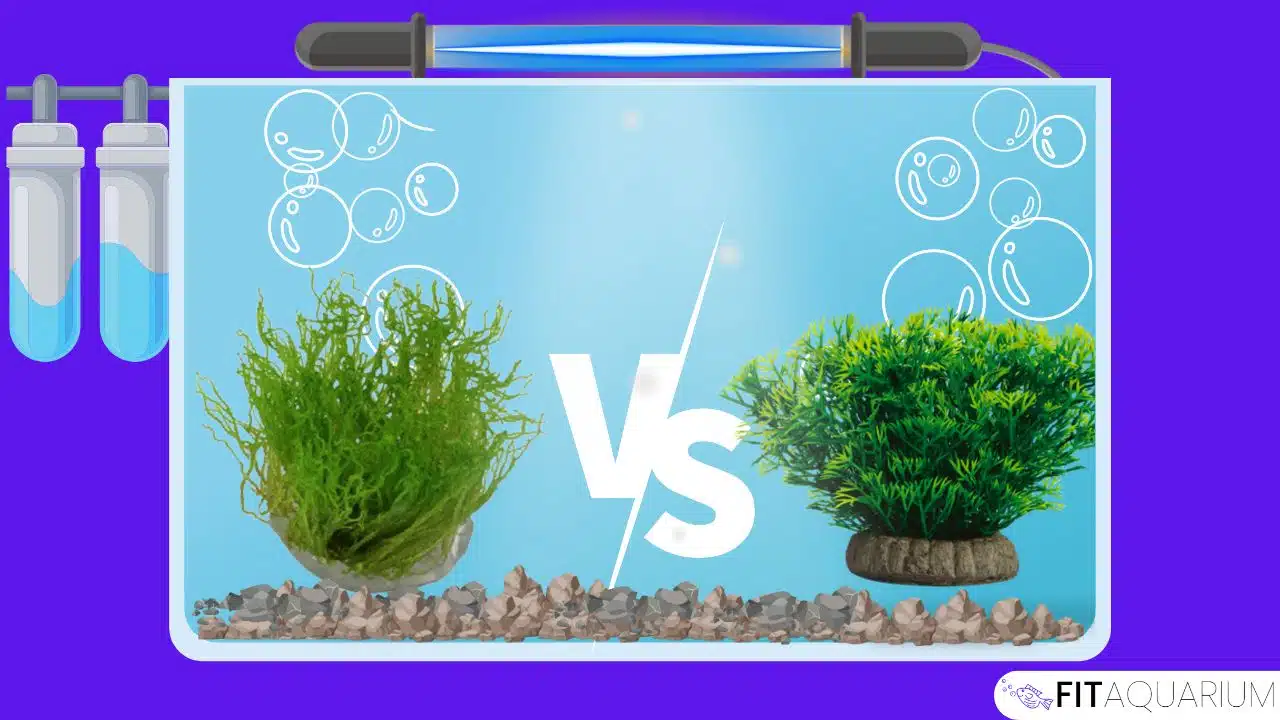
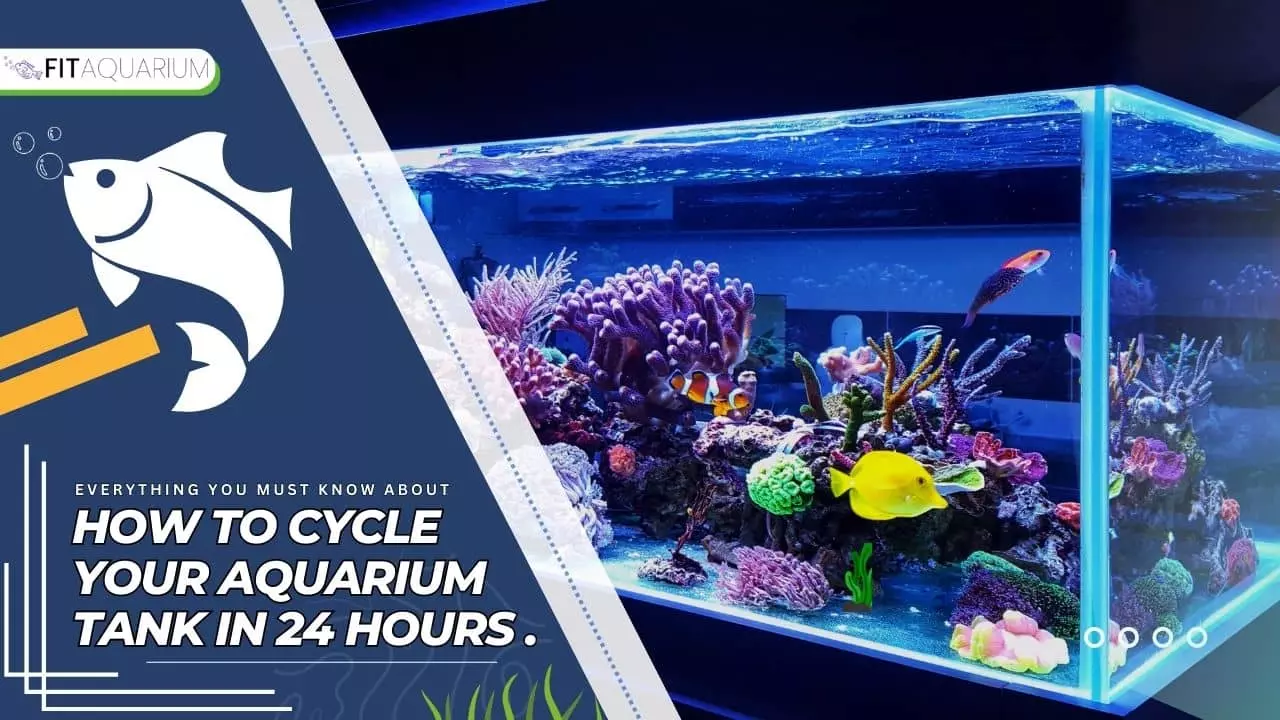
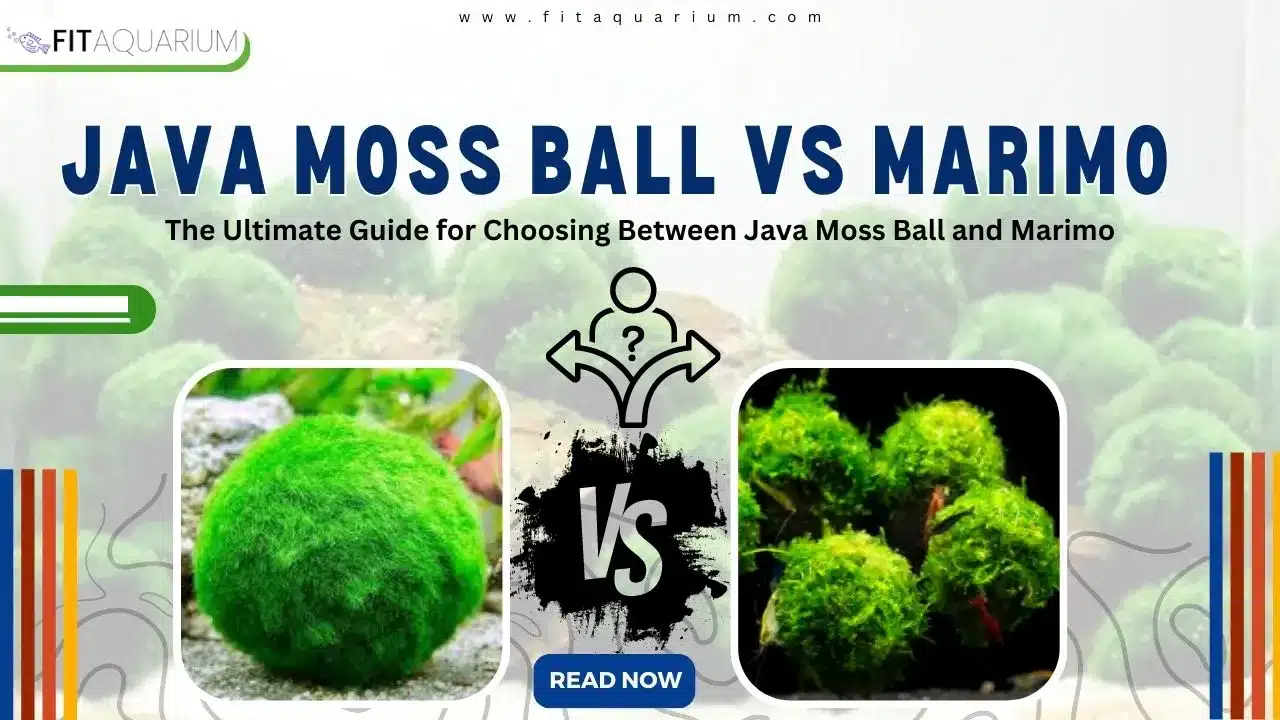
I’ve recommended this website to friends and family who were looking to buy or sell items locally.
I appreciate your your love buddy!
But this is not an ecommerce store. Its a blog just to help people with their aquarium related queries.
In my opinion these three sites are best to buy aquarium products.
Admiring the commitment you put into your website and in depth information you present. It’s great to come across a blog every once in a while that isn’t the same old rehashed information. Excellent read! I’ve saved your site and I’m including your RSS feeds to my Google account.
Thanks mate for your love,
I put my best and try to provide you most authenticated authenticated information
Incredible article! You have a talent for explaining complex topics in a way that’s easy to understand. I really appreciated the examples you used. They helped me grasp the concepts much better. Keep up the great work!
Thanks for the compliment buddy.